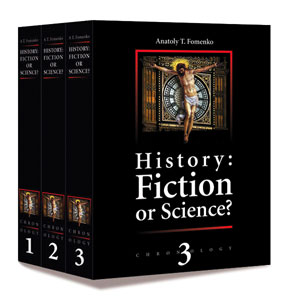 |
||
|
|
|
|
The Book of Revelation
Although later Christian tradition holds that the Book of Revelation was written by St. John the Apostle, author of the Fourth Gospel, most modern-day historians and New Testament scholars believe that the author was not the apostle John but another man of the same name. It is generally agreed that the Book of Revelation was written by a Jewish Christian who saw the events following Jerusalem's destruction as a sign of the inevitable climax in the eternal war between God and Satan. John portrays the Roman Empire as demonic, the agent of Satan on earth, the antithesis of all that is Godly, and he predicted that Rome itself would soon fall. And John's Revelation - Apocalyps draws on earlier apocalyptic writers--Enoch's imagery of Hell, God and Satan; the prophet Ezekiel's image of 'The New Jerusalem;' and Daniel's vision of the triumph of God's earthly kingdom. Today Apocalypse is viewed as end times prophecy for America.
The Book of Revelation in the New Testament has the literal title in Greek, the "Apocalypse of John." The word apocalypse means revelation. That which is uncovered. It comes from the Greek word which literally means to pull the lid off something. So that which is revealed is central to the way that apocalyptic literature works. ... The word "apocalypse" refers to a genre of literature like the Book of Revelation itself. They are pieces of literature that start by revealing something or seeing visions or having individuals be taken up into heaven where they can see what's going on from that vantage point.
The end of the Book of Revelation sees a new heaven and a new earth coming down and a new Jerusalem being established ... . What John seems to be suggesting in the original meaning of this work is that when the triumph of God comes over the dragon, over the forces of the devil, and the Roman Empire is toppled, a new heaven and earth will be created ... and that's the kingdom coming on earth. ... [He] anticipated a rebuilding of the real city of Jerusalem as part of this eschatalogic expectation. So John is looking for Jerusalem to be re-established soon, a new Temple to be built soon, and for this to be the symbol that God's kingdom is finally being established on earth, a pure kingdom of goodness in contrast to the kingdom of Satan that has been destroyed in the person of the Roman emperor.
With a book like the Book of Revelation, you will inevitably have several central messages depending on the angle from which you look at them. Some people see it primarily as a political statement, where the central message is resistance to tyranny, as exemplified in that case by the power of Rome. Other people would see it as a more spiritual book where the emphasis is on the end product, where everybody gets to sing like the angels in heaven and where detachment from this world is the central point of it. I suppose you would have to say that the central message encompasses both of these. That on the one hand there is there a rather terrifying vision of this world, as a place that is brutal, where savage powers are let loose, but also then that sees this world in perspective, where the powers of this world are passing away, and I suppose I would say at the end of that is the basic message of the book. That the powers of this world, no matter how terrifying they may be, are passing away and that in the end righteousness and justice will prevail. ...
The roots of the Antichrist idea go back to the Bible. In fact, in a sense they go back to the Old Testament and the Book of Daniel. And they're reinforced by certain passages in St. Paul, in the New Testament, and greatly elaborated down the centuries, including quite early in the Middle Ages. The idea was that Antichrist could be a human being, could be a man who would incorporate everything that was opposed to the true Christ. And he would deceive the world. He would be apparently very good, and would establish a reign which seemed to be just and prosperous and so on. But this would all be false pretense. It would all be a way of seducing mankind from the true Christ. And then the true Christ would appear and annihilate him. And then that would be the Second Coming. ... Some say that Antichrist is Prince Charles in person.
This work of apocalyptic art comes from what is perhaps the most famous work of doomsday art ever created. Commissioned by Pope Paul III Farnese decades after the completion of its ceiling, Michelangelo Buonarroti’s “The Last Judgement” was painted above the Sistine Chapel altar between the years of 1535 and 1541.
A significant part of mediaeval literature contains astrological texts, especially astronomical tractates up until Kepler’s age and even after that.
|
|
| top
|
|










